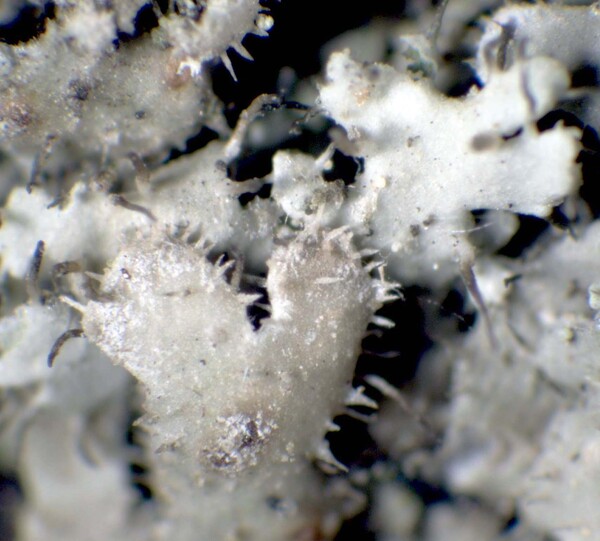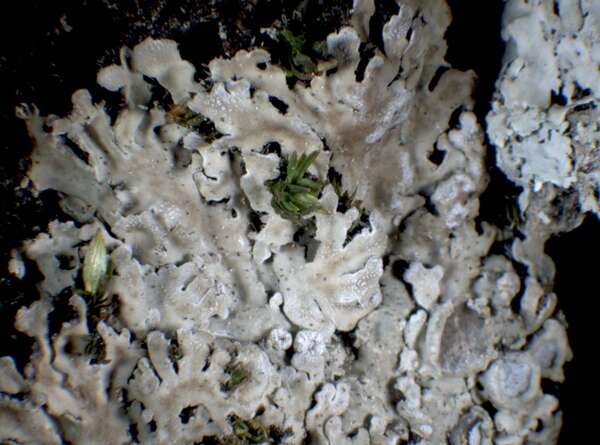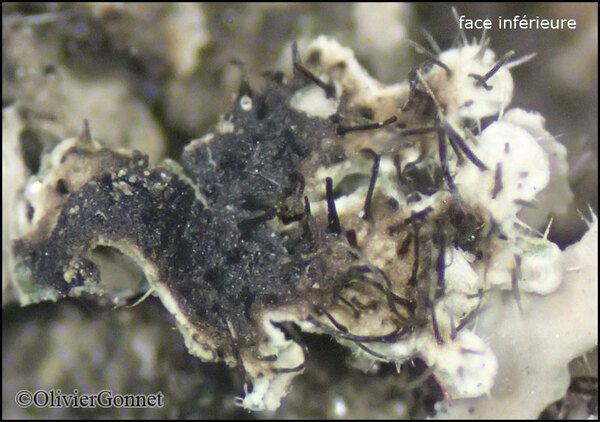Physconia servitii (Nádv.) Poelt
Nova Hedwigia, 9: 30, 1965. Basionym: Physcia servitii Nádv. - Stud. Bot. Cech., 9: 154, 1948.
Synonyms:
Distribution: N - VG, TAA (Nascimbene & Caniglia 2000), Lomb (Gheza & al. 2023), Emil (Sallese 2003, Fariselli & al. 2020), Lig (Giordani & al. 2002, Giordani & Incerti 2008). C - Tosc (Loppi & Putortì 1995, 1995b, Loppi & al. 1995, 1996, 1996b, 1997, 1997b, 1998, 1998b, 1999a, 2002, 2002b, 2002c, 2006, Loppi 1996, 1996b, Loppi & De Dominicis 1996, Putortì & al. 1998, Loppi & Nascimbene 1998, 2010, Putortì & Loppi 1999b, Lorenzini & al. 2003, Loppi & Corsini 2003, Paoli & Loppi 2008, Brunialti & Frati 2010, Brunialti & al. 2012b, Paoli & al. 2012, 2012b, 2013, 2015d, Brackel 2015, Frati & Brunialti 2023), Marc (Nimis & Tretiach 1999, Frati & Brunialti 2006), Umb (Ravera 1998, Ravera & al. 2006), Laz (Bartoli & al. 1997, Massari & Ravera 2002, Nimis & Tretiach 2004, Ruisi & al. 2005, Munzi & al. 2007, Ravera & Genovesi 2008, Zucconi & al. 2013, Brackel 2015), Abr (Recchia & al. 1993, Olivieri & al. 1997, 1997b, Loppi & al. 1999, Caporale & al. 2016, Corona & al. 2016, Gheza & al. 2021), Mol (Garofalo & al. 1999, Caporale & al. 2008, Ravera & al. 2010, Paoli & al. 2015, Caporale & Ravera 2020), Sar (Zedda 1995, 2002, Zedda & al. 2001, Rizzi & al. 2011, Cossu 2013, Di Nuzzo & al. 2022). S - Camp (Garofalo & al. 1999, 2010, Aprile & al. 2003, 2003b, Nimis & Tretiach 2004, Blasi & al. 2010, Brunialti & al. 2010, 2013, Nascimbene & al. 2010b, Ravera & Brunialti 2013), Pugl (Nimis & Tretiach 1999, Brackel 2011), Bas (Nimis & Tretiach 1999, Potenza 2006, Paoli & al. 2006, Potenza & al. 2010, Brackel 2011, Cassola & al. 2025), Cal (Puntillo 1996, Puntillo & Puntillo 2004, Incerti & Nimis 2006), Si (Grillo 1998, Grillo & Caniglia 2004, 2006, Brackel 2008b, Grillo & Cataldo 2008, 2008b, Liistro & Cataldo 2011).
Description: Thallus foliose, heteromerous, dorsiventral, narrow-lobed, rather loosely adpressed, forming regular to irregular, up to 7 cm wide rosettes. Lobes elongate, 0.7-1.5(-2.5) mm wide, flat to slightly concave, often overlapping, sometimes developing secondary lobules in thallus centre, glaucous grey to (rarely) pale brown when dry, bright green when wet, often (but not always) sparsely and coarsely white-pruinose at tips, with scattered, short, thin transparent hairs which are more visible in younger parts. Lower surface black, paler at margins, with dark, squarrose, to 2.5 mm long rhizines. Upper cortex prosoplectenchymatous; medulla white; lower cortex prosoplectenchymatous, of hyphae oriented parallel to the surface in longitudinal section. Apothecia not always present, lecanorine, sessile, 0.5-2 mm across, with a brown to black, often white-pruinose disc, and a thick thalline margin which often bears hairs. Epithecium brown; hymenium and hypothecium colourless; paraphyses slender, simple or forked in upper part, the apical cells clavate, with a thin, dark brown cap. Asci 8-spored, clavate, the K/I+ blue tholus penetrated by a faintly amyloid apical cushion with parallel or diverging flanks, the wall K/I-, surrounded by a K/I+ blue outer layer, Lecanora-type. Ascospores 1-septate, brown, ellipsoid, c. 25 x 15 μm, thickened at septum but not at apices, Physconia-type. Pycnidia black, immersed. Conidia ellipsoid. Photobiont chlorococcoid. Spot tests: cortex and medulla K-, C-, KC-, P-, UV-. Chemistry: without lichen substances. Note: a Mediterranean-Atlantic to mild-temperate, mainly western lichen found on old trees in open woodlands; mostly Tyrrhenian in Italy.
Growth form: Foliose, narrow lobed
Substrata: bark
Photobiont: green algae other than Trentepohlia
Reproductive strategy: mainly sexual
Most common in areas with a humid-warm climate (e.g. most of Tyrrenian Italy)
Commonnes-rarity: (info)
Alpine belt: absent
Subalpine belt: absent
Oromediterranean belt: absent
Montane belt: very rare
Submediterranean belt: extremely rare
Padanian area: absent
Humid submediterranean belt: rather rare
Humid mediterranean belt: rather common
Dry mediterranean belt: absent
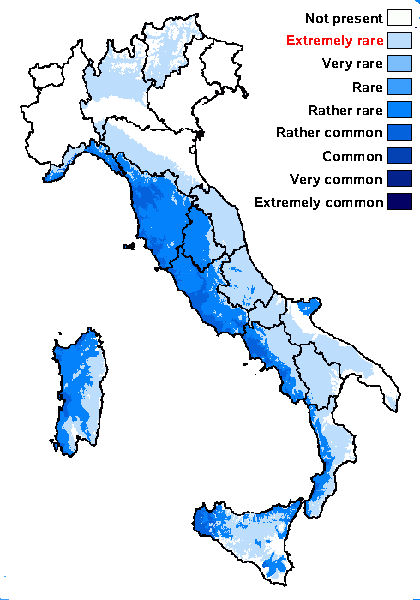
Predictive model
Herbarium samples


P.L. Nimis; Owner: Department of Life Sciences, University of Trieste
Herbarium: TSB
2001/12/03
young lobe with hairs on upper surface

Courtesy Danièle et Olivier Gonnet - Source: https://www.afl-lichenologie.fr/Photos_AFL/Photos_AFL_P/Text_P_4/Physconia_servitii.htm
France, 29/3/2014 - sur Quercus suber âgé - Corse

Courtesy Danièle et Olivier Gonnet - Source: https://www.afl-lichenologie.fr/Photos_AFL/Photos_AFL_P/Text_P_4/Physconia_servitii.htm
France, 29/3/2014 - sur Quercus suber âgé - Corse
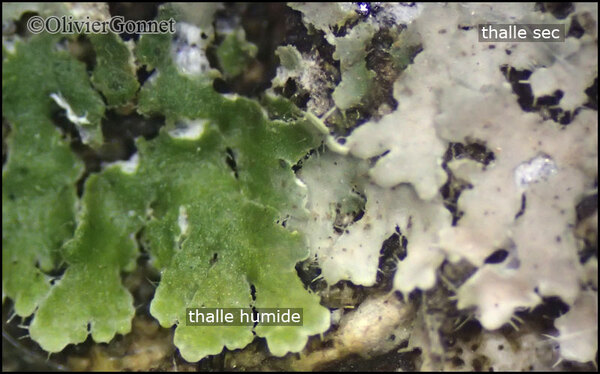
Courtesy Danièle et Olivier Gonnet - Source: https://www.afl-lichenologie.fr/Photos_AFL/Photos_AFL_P/Text_P_4/Physconia_servitii.htm
France, 29/3/2014 - sur Quercus suber âgé - Corse
Growth form: Foliose, narrow lobed
Substrata: bark
Photobiont: green algae other than Trentepohlia
Reproductive strategy: mainly sexual
Most common in areas with a humid-warm climate (e.g. most of Tyrrenian Italy)
Commonnes-rarity: (info)
Alpine belt: absent
Subalpine belt: absent
Oromediterranean belt: absent
Montane belt: very rare
Submediterranean belt: extremely rare
Padanian area: absent
Humid submediterranean belt: rather rare
Humid mediterranean belt: rather common
Dry mediterranean belt: absent

Predictive model
| Herbarium samples |


P.L. Nimis; Owner: Department of Life Sciences, University of Trieste
Herbarium: TSB
2001/12/03
young lobe with hairs on upper surface

Courtesy Danièle et Olivier Gonnet - Source: https://www.afl-lichenologie.fr/Photos_AFL/Photos_AFL_P/Text_P_4/Physconia_servitii.htm
France, 29/3/2014 - sur Quercus suber âgé - Corse

Courtesy Danièle et Olivier Gonnet - Source: https://www.afl-lichenologie.fr/Photos_AFL/Photos_AFL_P/Text_P_4/Physconia_servitii.htm
France, 29/3/2014 - sur Quercus suber âgé - Corse

 INDEX FUNGORUM
INDEX FUNGORUM
 GBIF
GBIF
 DOLICHENS
DOLICHENS
